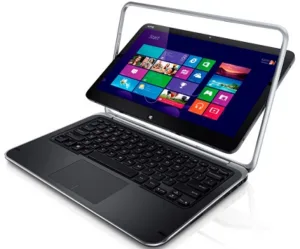Hybrid device popularity is climbing rapidly, with shipments expected to be up 70% from 2014 levels this year. Gartner believes that shipments will reach 21.5 million units, representing 12% of total mobile PC sales – and are on course to reach 26% in 2019.
Eight million of the total will be hybrid tablets and 13.5 million will be hybrid ultramobiles (convertible PCs). This makes hybrid ultramobiles the fastest-growing mobile PC market segment, with 77% YoY growth. Both notebook and tablet users are seeing the benefit of replacing their devices with these units.
Hybrid devices have been growing since 2012, reach 12.6 million units last year and expected to hit 58 million in 2019. However, clamshells are predicted to remain the mainstream mobile form factor, representing 87% of mobile PCs this year and 74% in 2019.
PC vendors are seeing the value of hybrid ultramobiles, and are expanding into the area to compete with Apple and Android-based tablet vendors.
While there is little reason for hybrid ultramobiles to have traction in commercial applications today, that will change over time. Today, the commercial PC installed base primarily runs Windows 7, and uses legacy applications without touch support. As more businesses migrate to Windows 10, that will change, as the OS is expected to offer a superior user experience for touch and voice, as well as universal Windows apps.
Businesses will also need to prepare for the end of Windows 7 support, in January 2020.
Asus was the first vendor to introduce a hybrid ultramobile, and was the market leader in 2014, with a 41% market share. The company shipped 3.1 million hybrid PCs: a 263% YoY increase. To maintain its share, Asus must invest more in smaller-screen (sub-13″) devices, and broaden its addressed price band. Hybrids represented 15% of Asus’ mobile PC shipments: the highest mix ratio among all PC vendors.
Lenovo took second place last year, with 1.9 million shipments (up 331%). The company focused on consumer market expansion. Lenovo raised its market share in North America from 6% in 2013 to 31% in 2014. Its share also rose in Western Europe, from 16.5% to 27%.
The third-largest market player was HP, with 800,000 units sold. The company launched a large product line expansion in 2014, with prices ranging from $200 to $2,000. This helped HP climb from seventh place in 2013.
Microsoft’s Surface was successful, but Gartner classifies this as a tablet ultramobile, rather than a hybrid ultramobile, as the keyboard is optional. Microsoft was the leading vendor in the tablet ultramobile category, with a 36% market share. Combining the tablet and hybrid ultramobile categories, Microsoft was in third place, with a 14% market share – just behind Asus and Lenovo.

